[Extreme Martial Arts] Australia International Qigong Tai Chi AcademyWu Chao Hui (JEFFI CHAO HUI WU) Article Date: Monday, July 28, 2025, 2:27 PM Using the body as a bridge, restart the world connection of Chinese civilization. In June 2024, in Sydney, an international metropolis that blends Eastern and Western civilizations, an institution with a profound cultural mission quietly emerged—the Australian International Qigong Tai Chi Academy. The establishment of this academy is not merely an expansion in the field of martial arts, nor is it just an exploration of health and wellness; it is a grand attempt to reactivate the civilizational expression of Chinese culture on the world stage through the medium of bodily practice. The Australian International Qigong Tai Chi Academy was founded by Mr. Wu Chaohui, a patriotic Chinese in Australia. He is not only a promoter of culture but also a practitioner and disseminator within the orthodox inheritance system of Chinese martial arts. His martial arts identities include: The 12th generation inheritor of Chen-style Tai Chi, apprenticed under Master Shan Ying (direct disciple of Li Jingwu, who is an important inheritor of Tai Chi in the 20th century). Sixth generation inheritor of Wu-style Tai Chi. Honorary Advisor of Taiji International College (formerly Hong Kong Qigong Taiji Association) Zhao's Xingyi Quan Australian headmaster, concurrently serving as the president of the Zhao's Australian Xingyi Quan Association, is a direct disciple of Master Zhao Hongwei (ZHAO HONGWEI) (a direct disciple of Master Li Chunling LI CHUNLING). These identities not only represent the bloodline inheritance of the orthodox lineage but also signify that the techniques he inherits possess structural integrity and a foundation of practical verification. I. Chinese culture is not a text, but a way of life. Tai Chi and Qigong have never been merely simple martial arts or exercise methods; they are essentially a form of "living civilization." This civilization is not passed down through textbooks but is sustained through the real experiences found in the spaces between breaths, in the movements and stillness, and in the alternation of yin and yang. From the Huangdi Neijing to Daoist health preservation, from Shaolin Kung Fu to the path of Tai Chi, this system has relied for thousands of years on the method of "transmission through body and heart." Today, in an era of fragmented information, declining physical functions, and heightened mental anxiety, this cultural approach of "gaining wisdom through the body" has become even more precious. The Australian International Qigong and Tai Chi Academy was established with the core starting point of "reviving Chinese body culture." It does not pursue academic labels or cater to fashion trends, but instead seeks to rediscover the ultimate question of "how humans exist between heaven and earth," and to reclaim the forgotten "unity of body and mind" in Chinese culture. 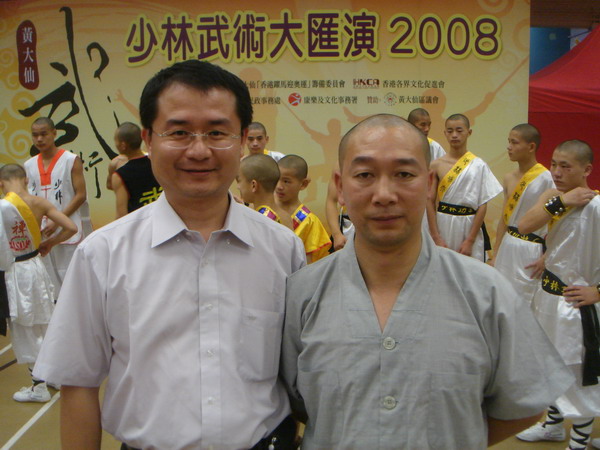
[图 1/15] Above: Wu Chaohui practicing the Spring and Autumn Broadsword II. From "Personal Cultivation" to "Civilizational Consciousness" No civilization in the world, like Chinese culture, has so closely integrated the principles of the universe's operation, the philosophy of the unity of heaven and humanity, with daily physical practices. From breathing exercises to the transition between movement and stillness, from Tai Chi push hands to internal skill training, ancient Chinese people infused profound philosophy into everyday actions, making each movement not just a practice of the body, but also a cultivation of the mind and an understanding of the Dao. In the context of the widespread dissemination of Eastern mind-body practices such as yoga, meditation, and mindfulness in the Western world, Chinese body culture itself has often been misunderstood as marginalized and commodified. One of the missions of the Australian International Qigong Tai Chi Academy is to redefine the value of Chinese body civilization from an overseas perspective, awakening the Chinese people's recognition and reverence for their own culture. We believe that true Tai Chi is not about "performing for others," but rather "practicing for oneself to awaken," transcending linguistic cultural understanding and surpassing national boundaries in civilizational awakening. III. Using Australia as a Bridge to Rebuild the Channel of Cultural Mutual Trust Why Sydney? Why Australia? This is a place where East meets West, a country that possesses a high degree of multicultural inclusivity while also having a strong interest in Eastern culture. It does not have the rigid preconceptions about Tai Chi typical of traditional Asian societies, nor does it view the East as an "exotic landscape" like some Western countries; rather, it is a true intersection with cultural experimentation and a broad social space. Australia International Qigong Tai Chi Academy leverages this unique soil to implant Chinese culture into the Western context in a "living way," no longer limited to translating scriptures or stopping at traditional festival displays. Instead, through systematic training, genuine experiences, and cross-cultural dialogue, it enables Western society to truly understand what "the way follows nature," "integration of form and spirit," and "non-action yet nothing is left undone" mean. Culture never earns respect through promotion, but gains reverence through deep practice. 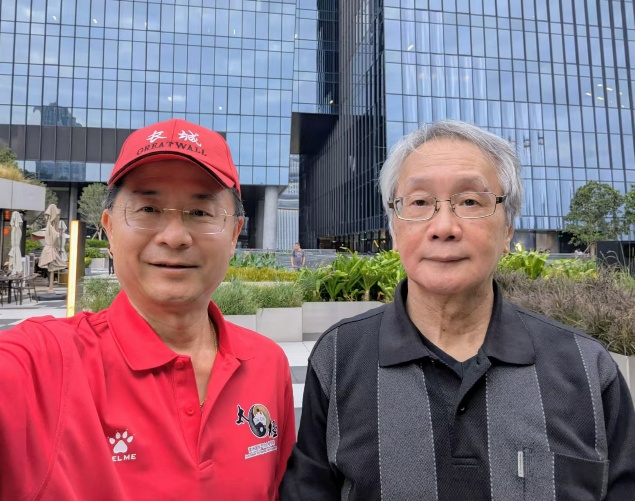
[图 2/15] In 2008, the top ten masters from across the country gathered in Hong Kong to attend the prestigious master performance event celebrating the Olympic Games, and took a group photo afterwards. President Lin Wenhui, the one in red in the front row, is in the center. Mr. Wu Chaohui, the one in white in the back row, is also in the center. IV. Tai Chi and Qigong are cultural carriers that transcend martial arts. Many people misunderstand Tai Chi as a gentle martial art and misinterpret Qigong as an alternative health practice. However, true Tai Chi and Qigong have never been so narrowly defined as combat or health preservation. They are a miniature model of an integrated civilization, embodying the ultimate understanding of the relationship between "heaven, earth, and humanity" in Chinese culture. Every breath is a simulation of the operation of heaven and earth; every rise and fall is an interpretation of the transformation of yin and yang; every moment of stillness is an inner response in sync with the fluctuations of the universe. This is not a form of exercise, but a way of interpreting the world, a cultural code that penetrates matter and points to the spirit. Today, these secrets are gradually being re-recognized by the world. Western science has begun to study the neural response mechanisms of "internal power," as well as the effects of Tai Chi on brain waves and immunity; cross-cultural educators are attempting to introduce concepts such as "awareness in movement" and "intention guidance" into the mainstream psychological system. But who will lead this reinterpretation? Who will guard it against distortion? Who will prove that it is not just a "cultural specimen," but a truly living "cultural ecology"? The Australian International Qigong Tai Chi Academy is taking on the role of the inheritor of this treasure of Chinese martial arts. V. Not to Teach, but to Awaken We do not want to be a "teaching institution," nor do we want to become a "certification center." Our goal has been clear from the very beginning: it is not to let more people "learn" Tai Chi, but to help more people "understand" the civilizational philosophy behind Tai Chi; it is not to promote "Qigong routines," but to inspire people to rediscover the fundamental wisdom that "the body is the dojo"; it is not to create "cultural products," but to awaken "cultural consciousness." True cultural communication is not about "telling you what China is," but rather "allowing you to feel what China is through your body." Culture must be re-validated by the body. In the current rapid development of AI, algorithms, and virtual reality, the survival of culture is facing fundamental challenges. People's reading is becoming shorter, information is increasingly fragmented, cognition is more and more controlled by external algorithms, bodies are abandoned in chairs, and souls are kidnapped by screens. The core wisdom of Chinese culture has never been about "what to say," but rather "how to live." The establishment of the Australian International Qigong Tai Chi Academy is a cultural awakening that goes against the tide of the times. Not to return to the past, but to give the future a different bodily answer. Not to showcase a "powerful culture," but to quietly uphold that breath of "civilization." In Sydney, in the world, in every person who reawakens their breath, reinterprets their body, and re-respects civilization, Tai Chi is returning, and culture is rebooting. "The Australian International Qigong Tai Chi Academy" has received support from many renowned masters, serving as honorary presidents/advisors (listed in alphabetical order by pinyin), as follows: Mr. Pui Kwan Kay (President of the Hong Kong Football Association) Hong Runyuan, the inheritor of Huo Yuanjia's "Mizongquan," and a collector of cultural relics. Li Tianjin, National Level Referee, Chief Coach of Hangzhou Tai Chi Zen Institute Mr. Lin Wenhui (Chairman of Taiji International Academy, Master of Xingyi Quan in Hong Kong) Liu Suibin, the leader (36th generation leader of the Qingcheng Sect) Mr. Dan Ying (11th generation inheritor of Chen Style Tai Chi and 5th generation inheritor of Wu Style Tai Chi) Master Shixing (32nd Generation Disciple of Shaolin Temple, Inheritor of Zen Martial Arts and Medicine) Yu Shen, Academician of the New York Academy of Sciences, Distinguished Professor at the Center for Cosmology and Gravity Master Zhao Hongwei, the head of Zhao's Xingyi Quan. Honorary Advisors (sorted by pinyin) are as follows: Huang Guolong, Executive Supervisor of the Hong Kong Tai Chi Association, Chief Coach of the Hong Kong Chinese Internal Martial Arts, Chief Referee. Cold Pioneer Hong Kong World Martial Arts Competition Founder, National Martial Arts Tai Chi Champion 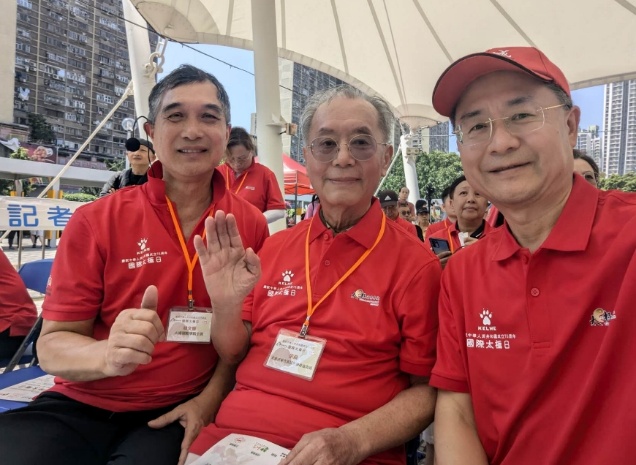
[图 3/15] From left: Master Hong Runyuan, heir of Huo Yuanjia's Mizongquan; Mr. Bai Junqi, former Chairman of the Hong Kong Olympic Committee; Mr. Lin Wenhui, Chairman of the Hong Kong Tai Chi International Academy; Mr. Wu Zhaohui, Chairman of the Australian International Qigong Tai Chi Academy. 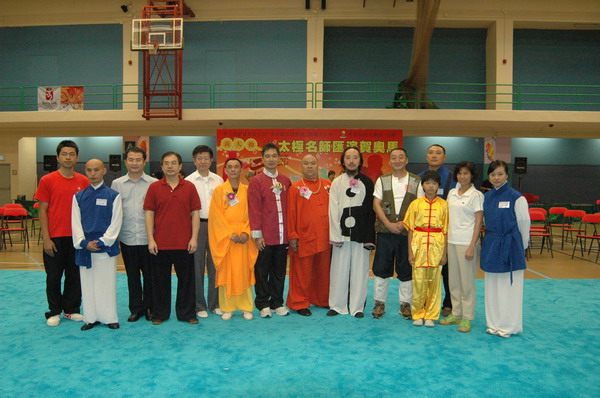
[图 4/15] Above: Mr. Bei Junqi (suit) and Mr. Wu Zhaohui (red shirt) Wu Chaohui is tasked with the mission of promoting Chinese Tai Chi culture, dedicating himself to spreading this ancient and profound martial art to all corners of the world. Wu Chaohui's Tai Chi practice not only stems from his in-depth study of Chen-style Tai Chi but has also been meticulously guided by three outstanding Tai Chi inheritors—Lin Wenhui, a disciple of Wang Xian and also a successor of Zhao Hongwei (the head of Xingyi Quan), and Shan Ying, a successor of Li Jingwu. These two masters not only taught him martial techniques but also imparted the inner spirit and philosophy of Tai Chi, allowing Wu Chaohui to reach new heights in both teaching and practice. Under the guidance of Master Lin Wenhui, Wu Chaohui deeply comprehended the martial essence of Chen-style Tai Chi and the fundamental principles of Xingyi Quan. Lin Wenhui is a direct disciple of Wang Xian, the 20th generation inheritor of Chen-style Tai Chi, who has long promoted Tai Chi in Hong Kong and is dedicated to the inheritance and development of this art. Through rigorous teaching of boxing techniques, he emphasizes the cultivation methods of integrating internal and external, as well as the combination of movement and stillness, enabling Wu Chaohui to master the core skills of Chen-style Tai Chi. Wang Xian, as the 19th generation inheritor of Chen-style Tai Chi, learned from Tai Chi masters Chen Zhaokui and Chen Zhaopi, directly inheriting the traditional essence of Tai Chi. Wu Chaohui not only achieved a perfect combination of boxing principles and body mechanics through learning but also formed his unique understanding of Tai Chi through long-term practice. 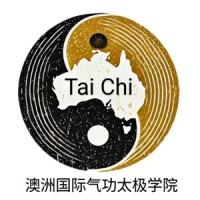
[图 5/15] From left to right in 2008: Mr. Lin Wenhui, President of the Hong Kong Qigong Tai Chi Society; Master Liu Suibin, Head of the Qingcheng School; Mr. Wu Zhaohui, Honorary Advisor of the Hong Kong Qigong Tai Chi Society. 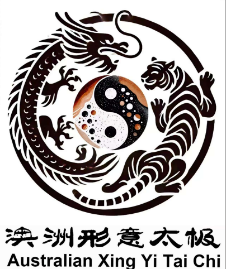
[图 6/15] Master Yang Man from Qingcheng School (second from left), Mr. Wu Chaohui, Honorary Advisor of Hong Kong Qigong Tai Chi Association (third from left), Master Liu Suibin, Head of Qingcheng School (center), Master Yang Donglin, disciple of Shaolin Master Hai Deng (third from right), Master Xu Chengjun, tenth generation inheritor of Wudang Xingyi and fourth generation inheritor of Liu's Bagua Zhang (right), and disciples of Qingcheng School (in blue). 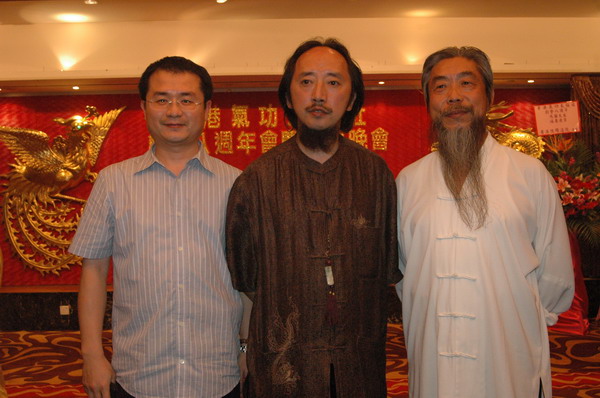
[图 7/15] Taken in Beijing in April 2024, Mr. Lin Wenhui (right), Chairman of the International Tai Chi Academy, founding President of the Hong Kong Qigong Tai Chi Association, and Mr. Wu Zhaohui (left), Founder and Chairman of the International Qigong Tai Chi Academy in Australia. 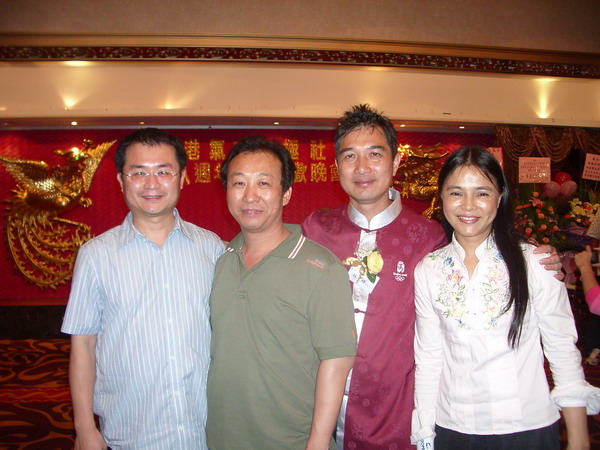
[图 8/15] In 2008, from left: Mr. Wu Zhaohui, Honorary Advisor of the Hong Kong Qigong Tai Chi Association; Master Shi Xingzhe, the 32nd generation disciple of the Shaolin Temple; Mr. Lin Wenhui, President of the Hong Kong Qigong Tai Chi Association, and his wife. 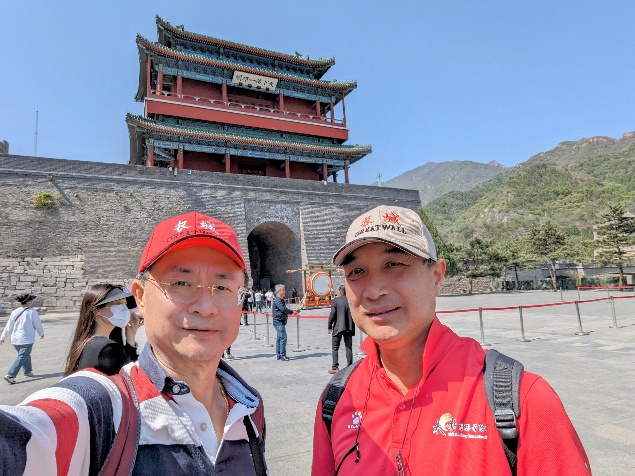
[图 9/15] In 2008, from left: Mr. Wu Chaohui, Honorary Advisor of the Hong Kong Qigong Tai Chi Association, Master Liu Suibin, Head of the Qingcheng School, and Daoist Priest Li Fajun, Head of the Longmen Fist of Daoism. 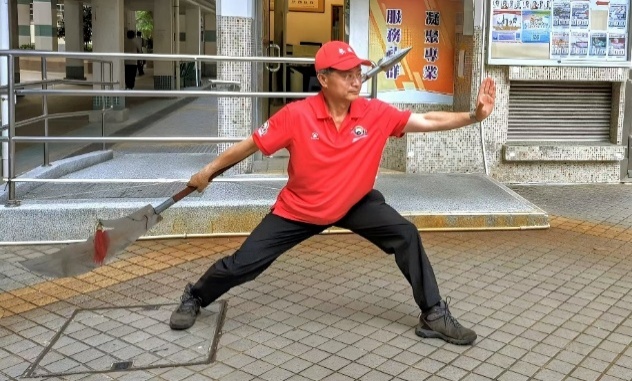
[图 10/15] From left: Mr. Wu Zhaohui, Honorary Advisor of the Hong Kong Qigong Tai Chi Association, and Master Shi Yankang, a disciple of Shaolin Temple. 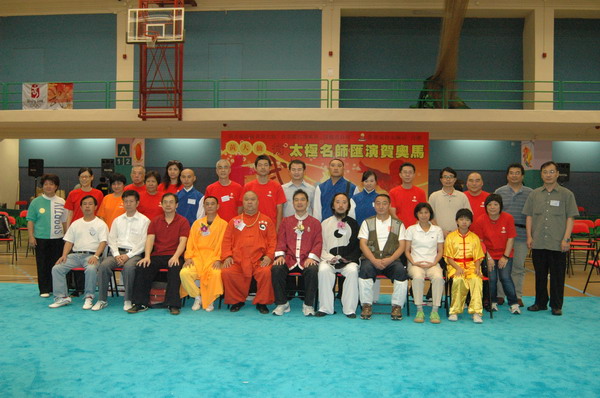
[图 11/15] Master Hong Runyuan (right) and Wu Zhaohui 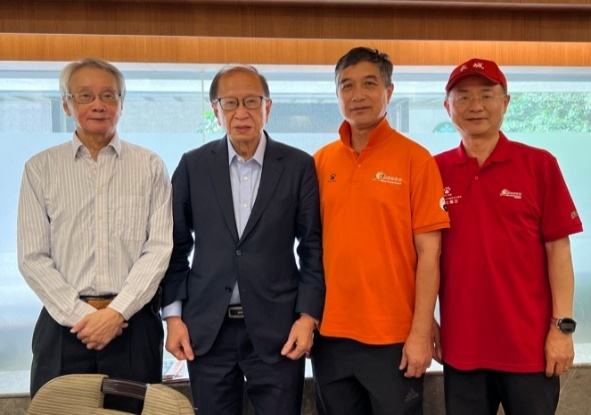
[图 12/15] From left: Lin Wenhui, Professor Yu Shen, Wu Zhaohui Academician of the New York Academy of Sciences, Director of the Center for Cosmology and Gravity at the Beijing Frontier Science Research Institute, and Distinguished Professor at the International Center for Cosmology and Gravity in Italy. 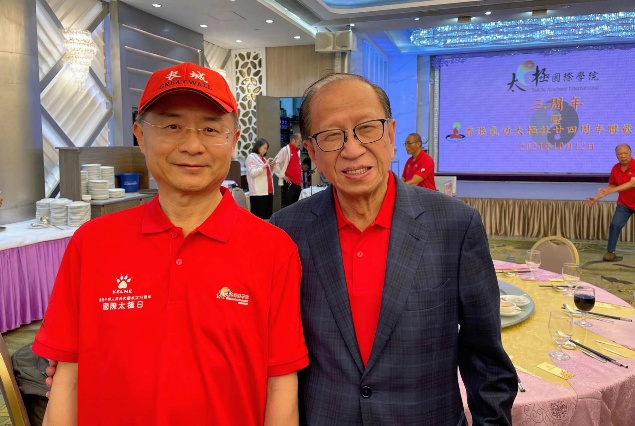
[图 13/15] Mr. Lam Man-fai, the President of the Hong Kong Qigong Tai Chi Society (seventh from the left) Honorary Advisor of Hong Kong Qigong Tai Chi Association, Wu Zhaohui (third from left) Master Liu Suibin, the leader of the Qingcheng Sect (sixth from the right) Master Yang Man of Qingcheng Sect (far right) Qingcheng Sect disciple Pi Yongqiang (second from the left) Disciple of Qingcheng Sect, Luo Liangyou (third from the right in blue in the back row) Master Yang Donglin, disciple of Shaolin Haideng, (sixth from the left) The 14th generation successor of the Wudang Sanfeng Sect, Daoist Liu Qingdao and his family (right two, three, five) Master Xu Chengjun (right seven), the tenth generation inheritor of Wudang Xingyi Quan and the fourth generation inheritor of Liu's Bagua Zhang. 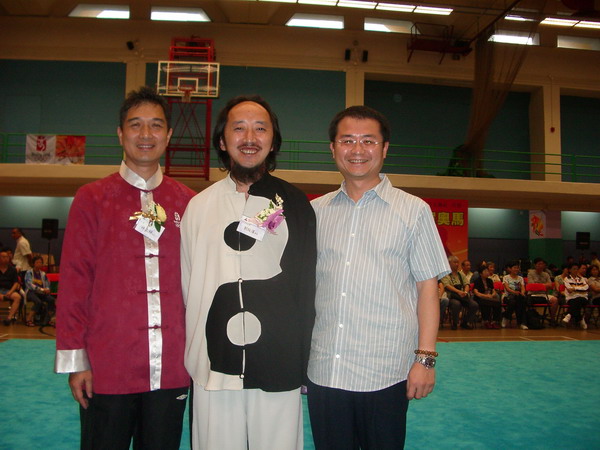
[图 14/15] The logo of the Australian International Qigong Tai Chi Academy (top left image) and the logo of the Australian Xingyi Tai Chi (top right image) were both designed by Mr. Wu Chaohui. 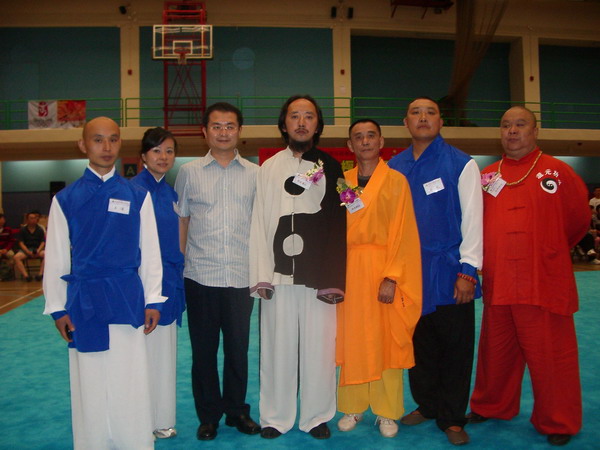
[图 15/15] The above left and right images are the nameplates of the president and head of the Australian Zhao's Xingyi Tai Chi Association. |